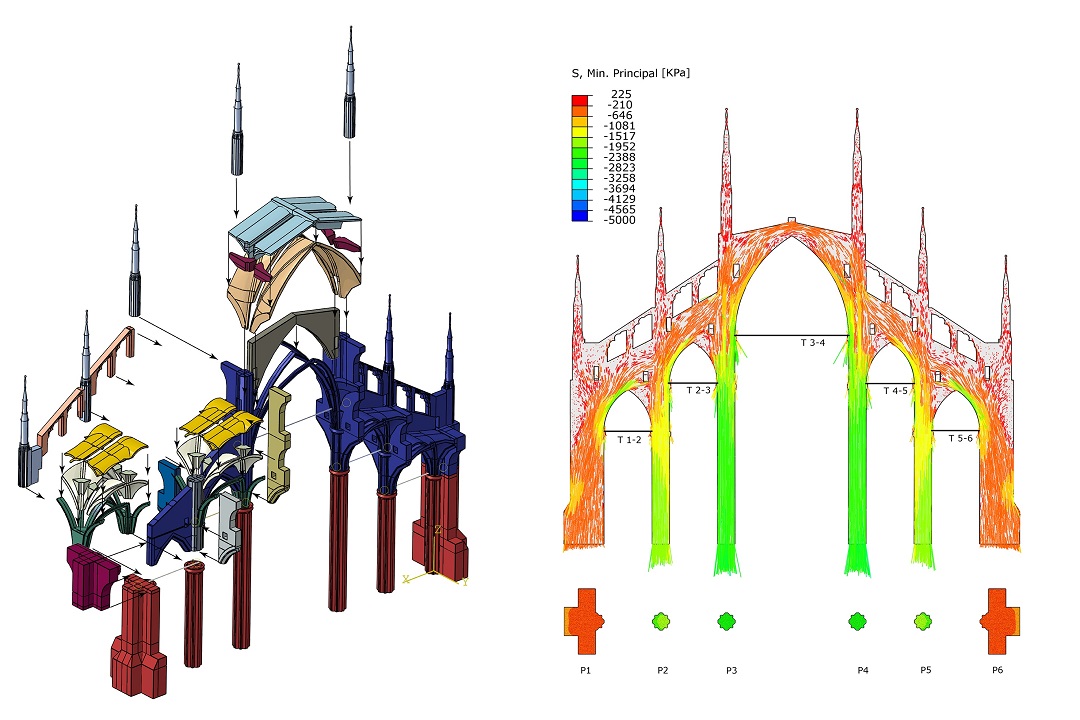Progettazione di opere nuove e
Riabilitazione Strutturale di opere esistenti
L’approccio a strutture esistenti, in particolare ai Beni Architettonici, richiede la conoscenza il più approfondita possibile, della loro geometria, dell’eventuale evoluzione storico-costruttiva, della composizione stratigrafica degli elementi strutturali, dello stato e delle prestazioni dei materiali e della loro compatibilità con i moderni materiali per l’intervento ai fini conservativi. Il gruppo di ricerca si occupa di rilievo strutturale (individuazione e quantificazione dei dissesti, delle variazioni di geometria e dello stato di degrado), dello sviluppo e della calibrazione di tecniche di indagine non distruttiva e/o moderatamente distruttiva (radar, soniche, ultrasoniche, tomografie, termografie, martinetti piatti, carotaggi, endoscopie, indagini geofisiche per l’archeologia), di prove di caratterizzazione meccanica, chimica e fisica dei materiali (anche in relazione all’esposizione ad ambienti aggressivi), della verifica dell’efficacia di trattamenti superficiali, di prove di carico su strutture, di sperimentazione di materiali componenti per la riparazione e la riabilitazione delle strutture. A questi ambiti di ricerca si aggiungono le tecniche e i metodi per il monitoraggio a breve e a lungo periodo, l’impostazione e le strategie di monitoraggio, la gestione dei dati ricavati dai rilievi.

